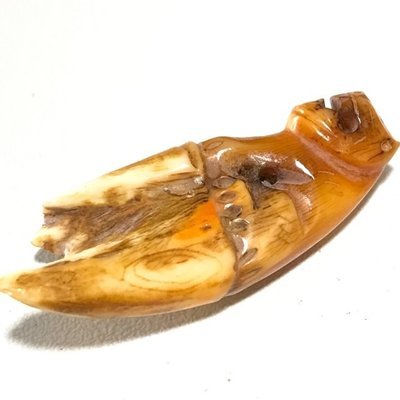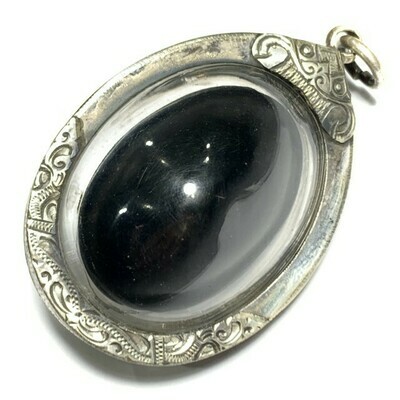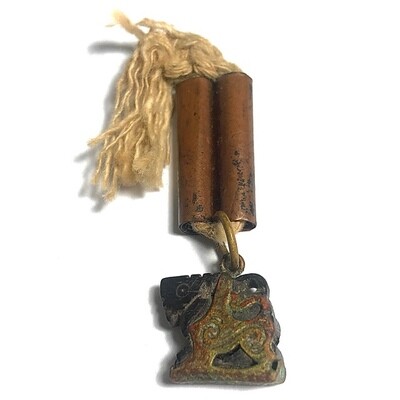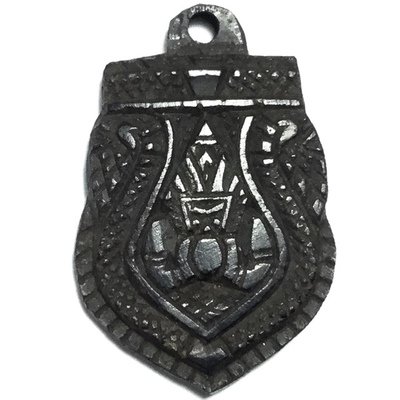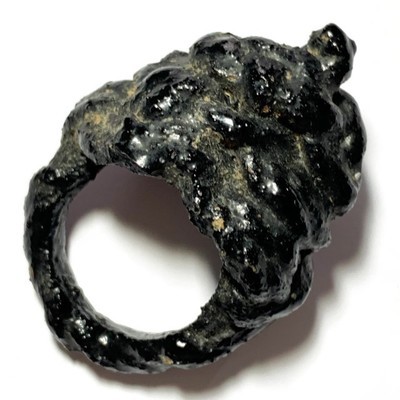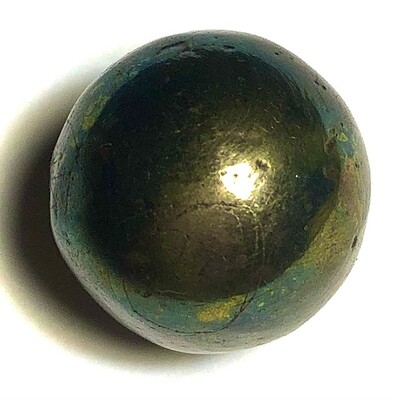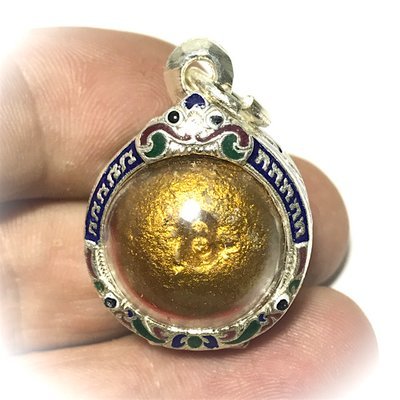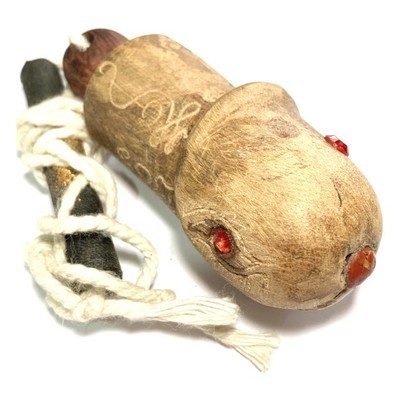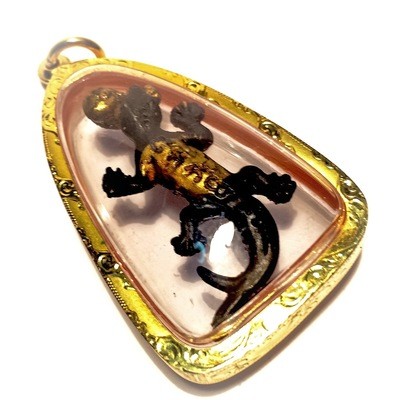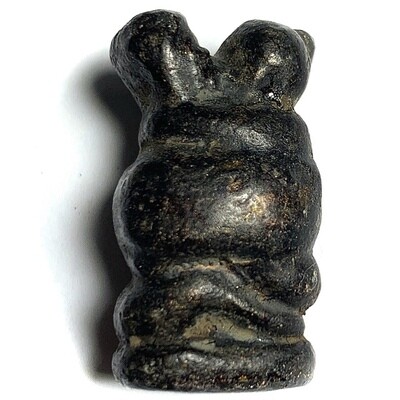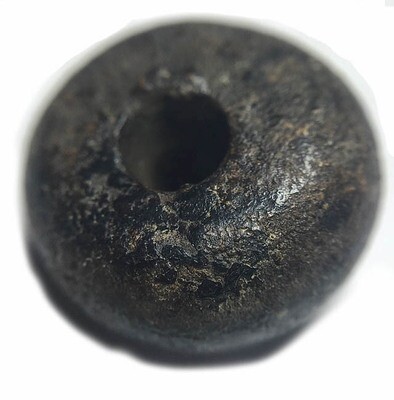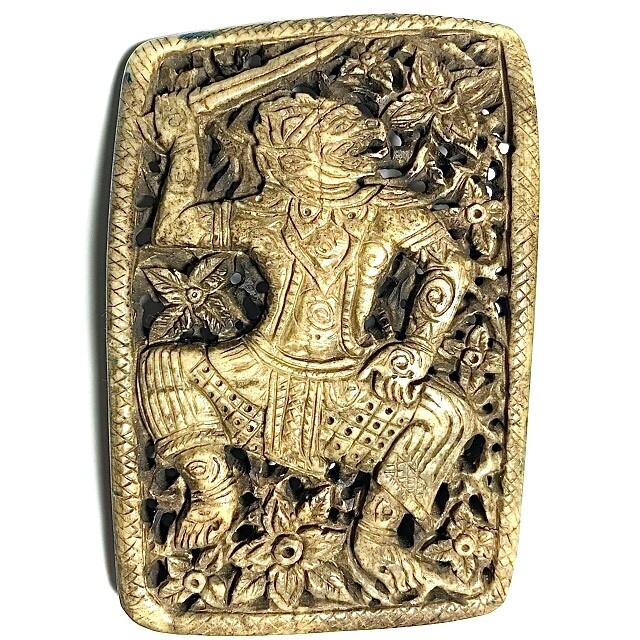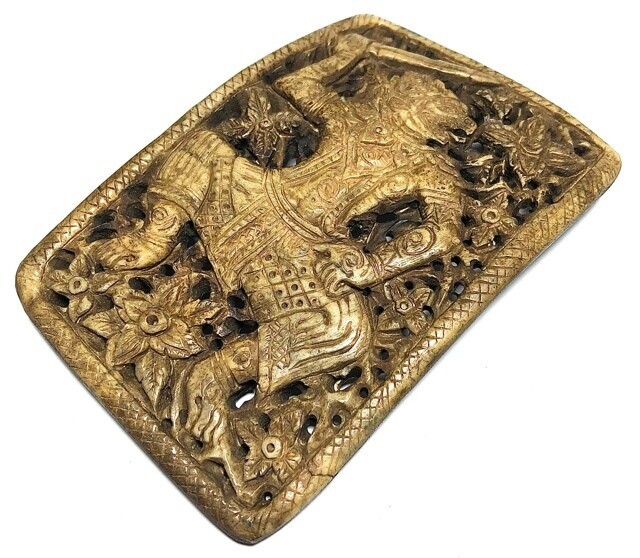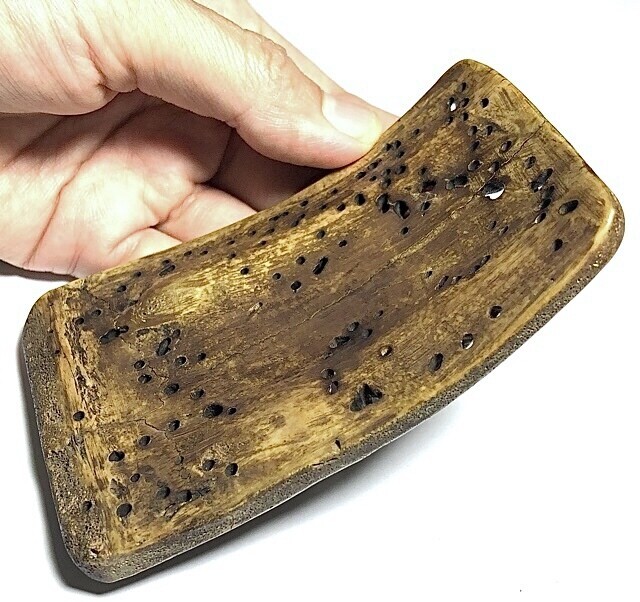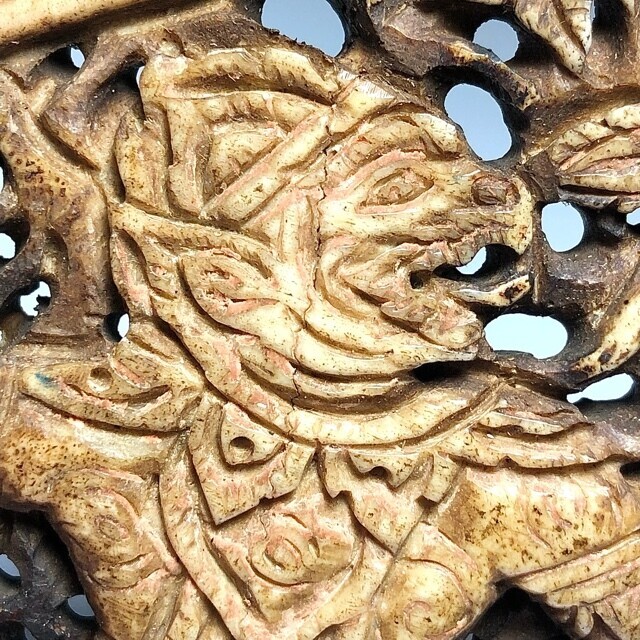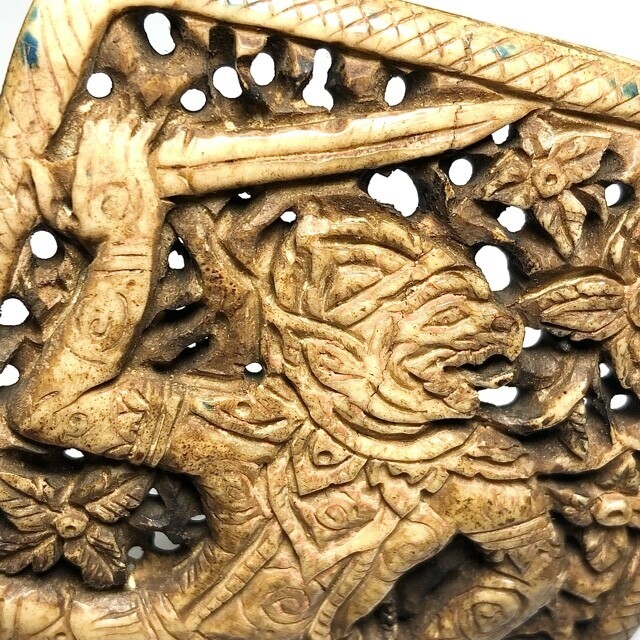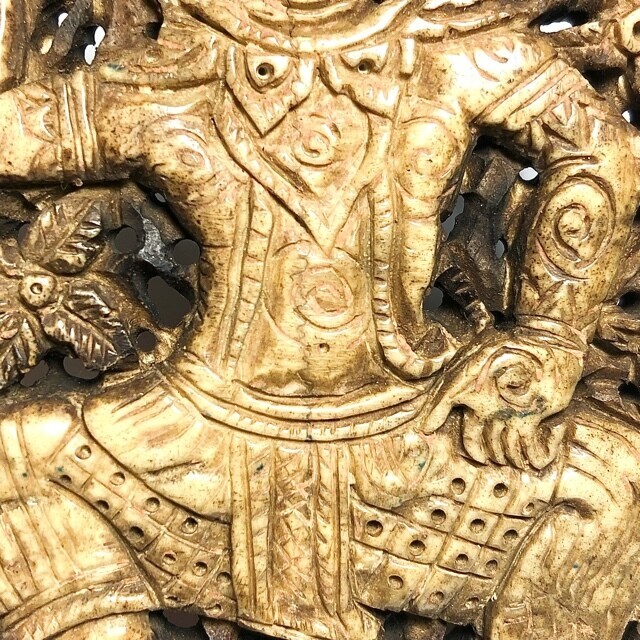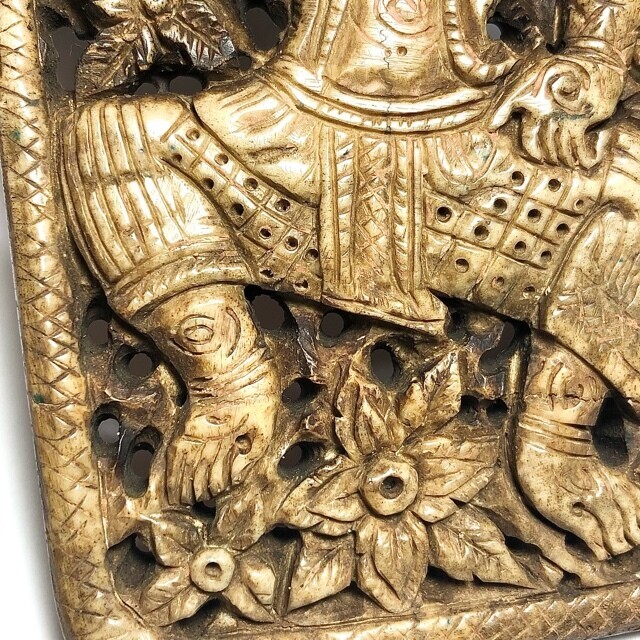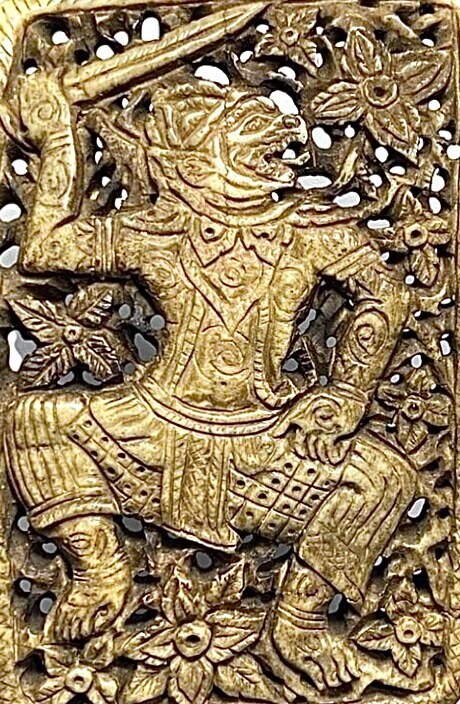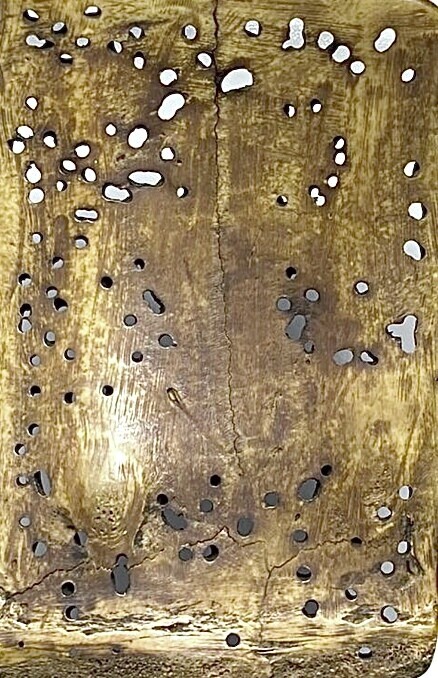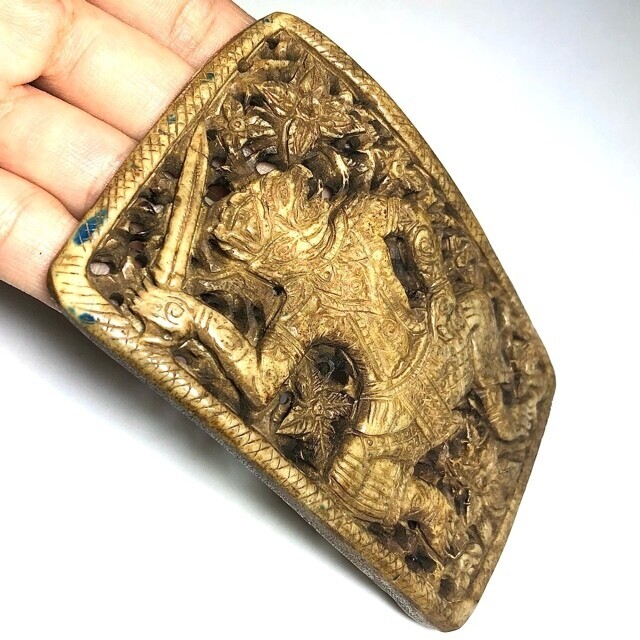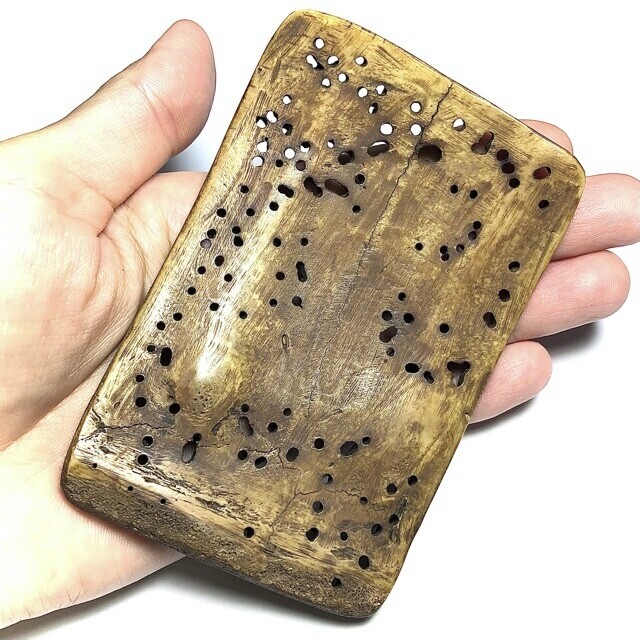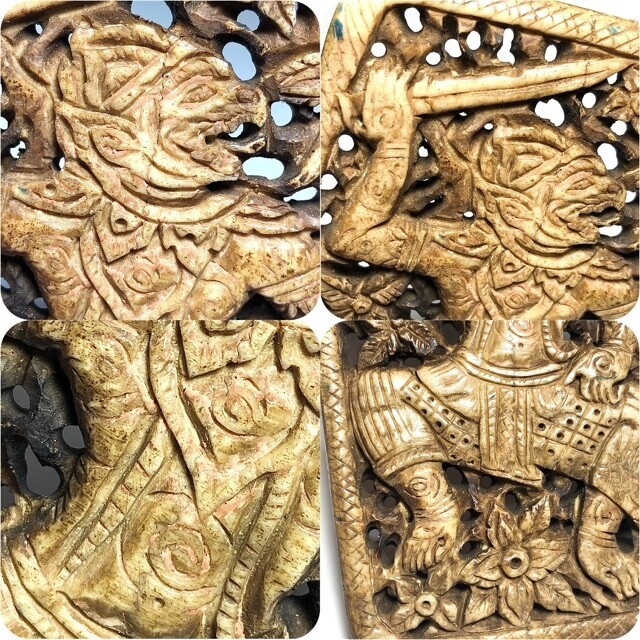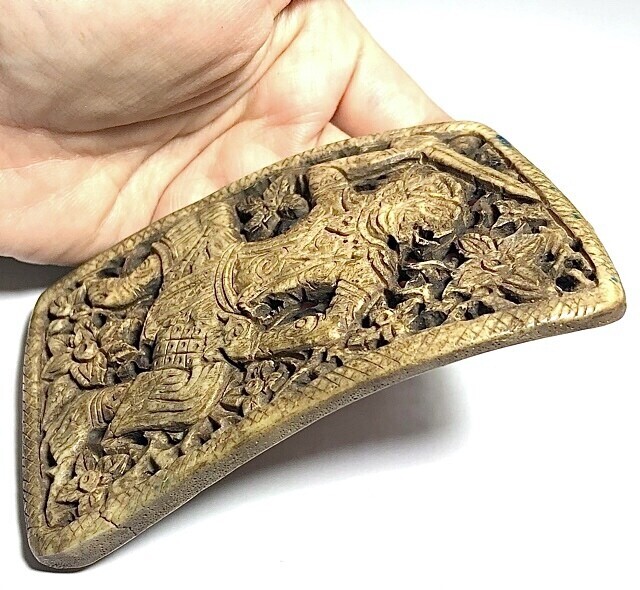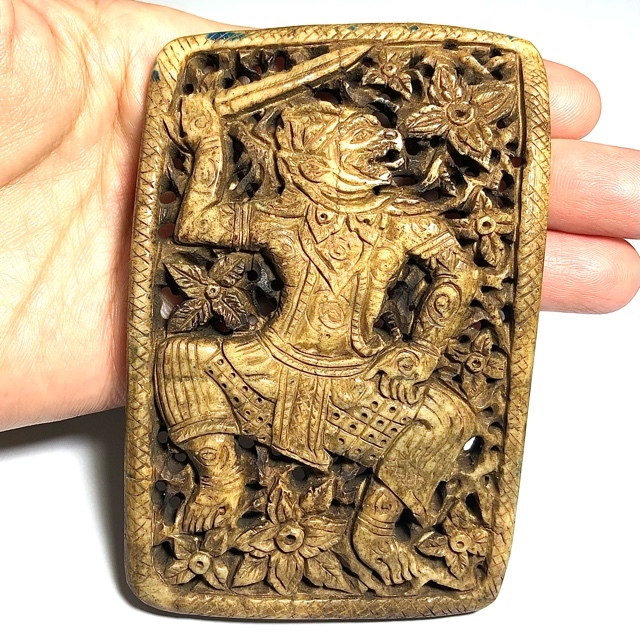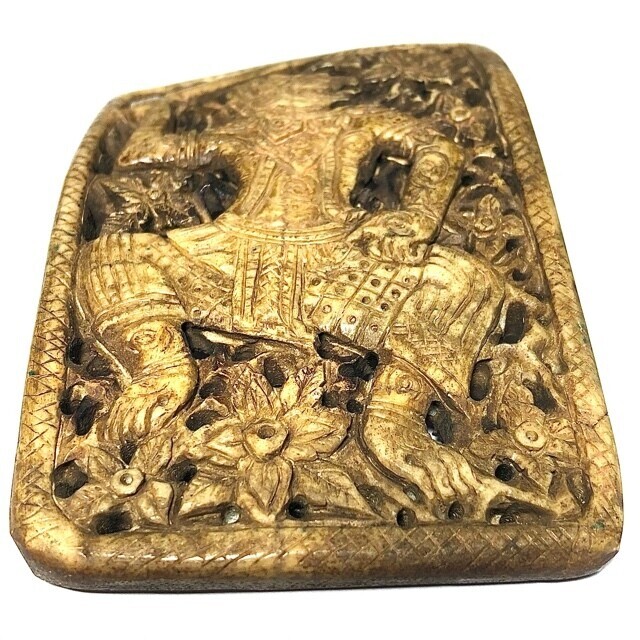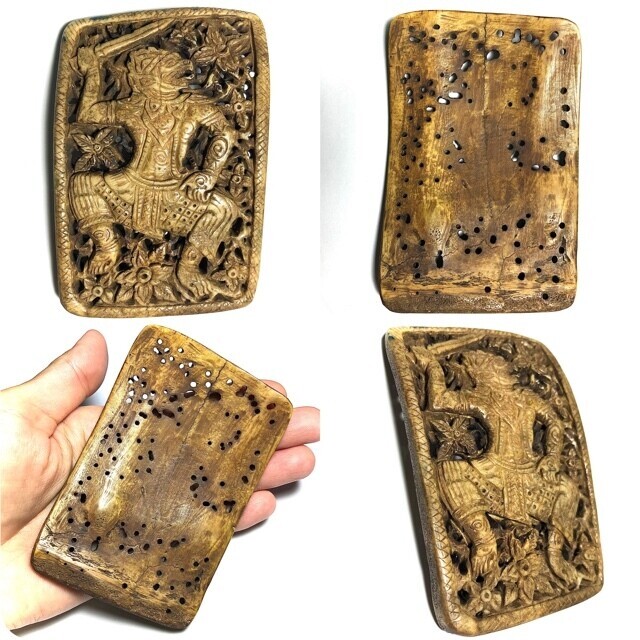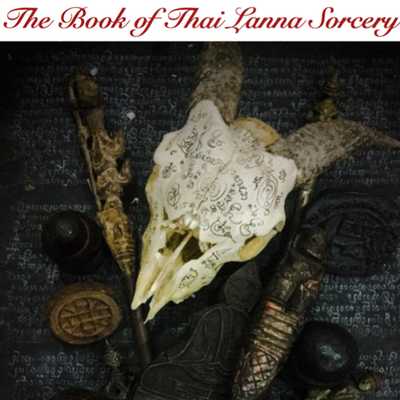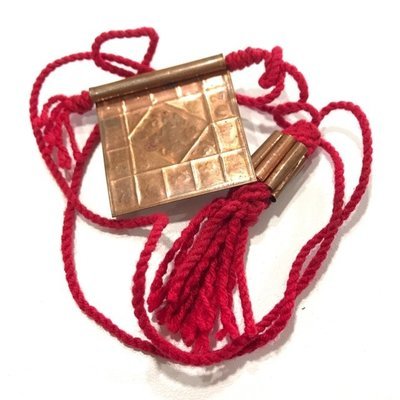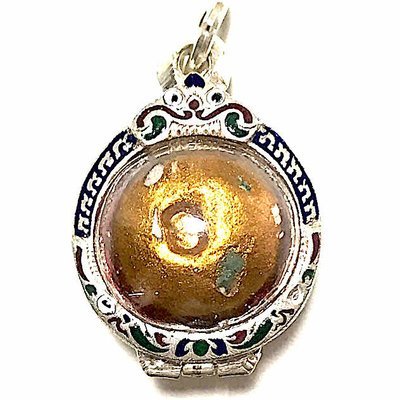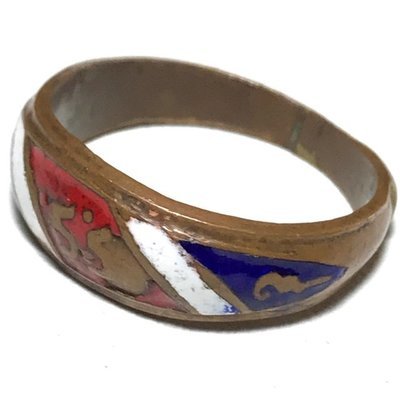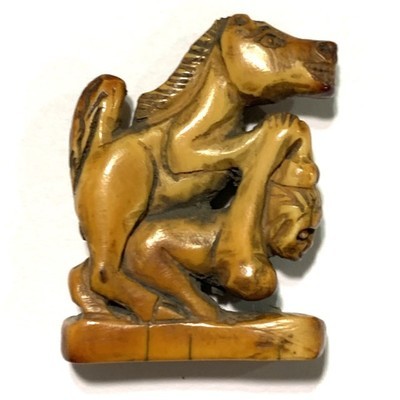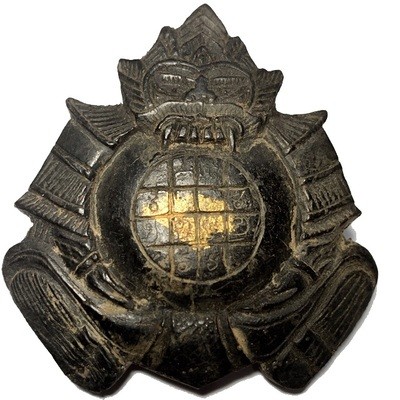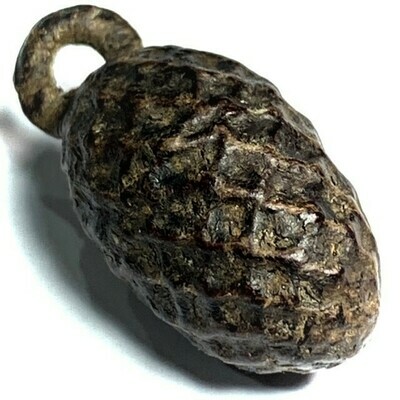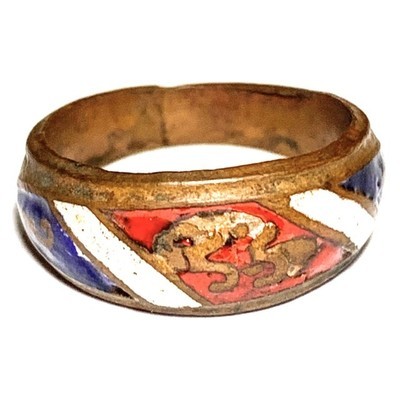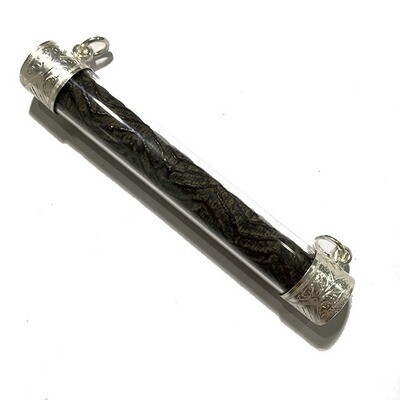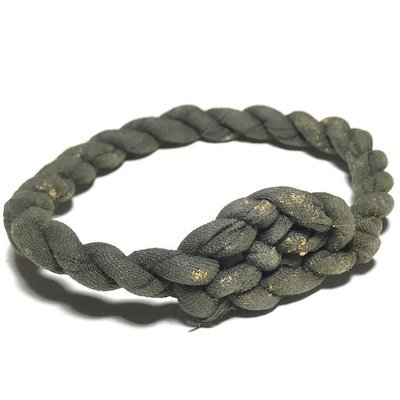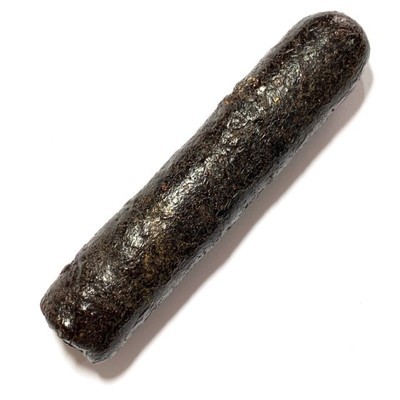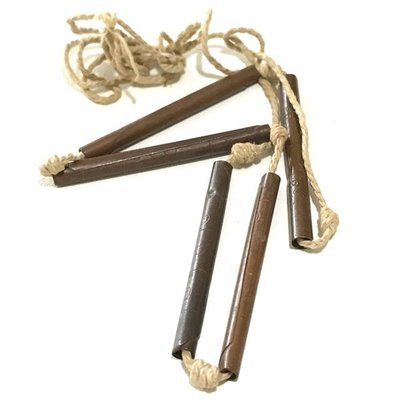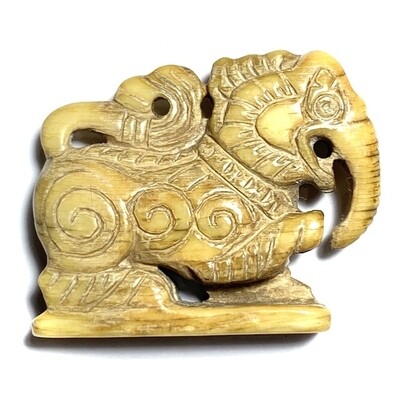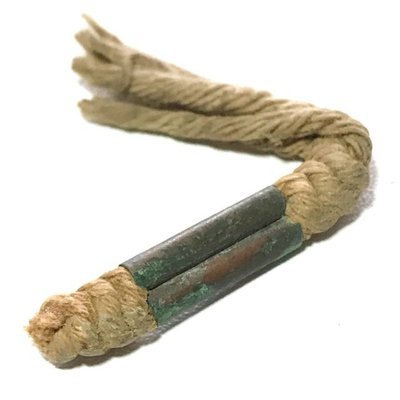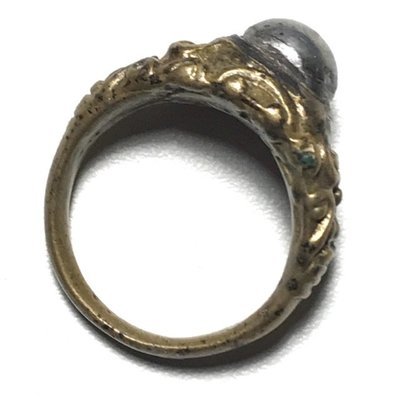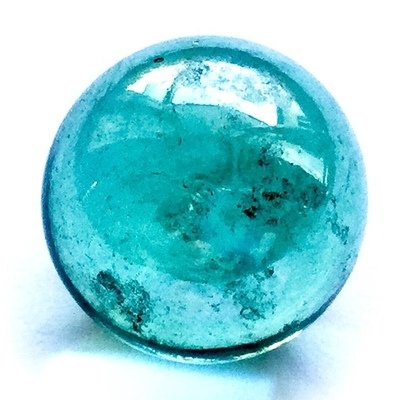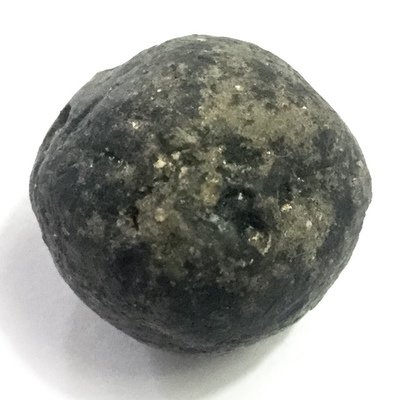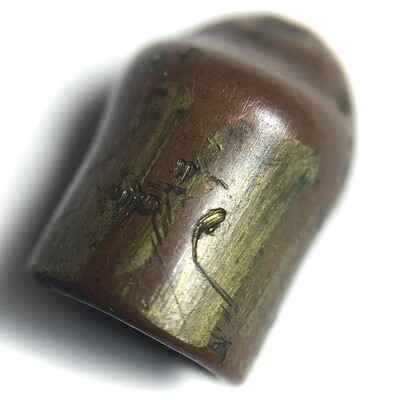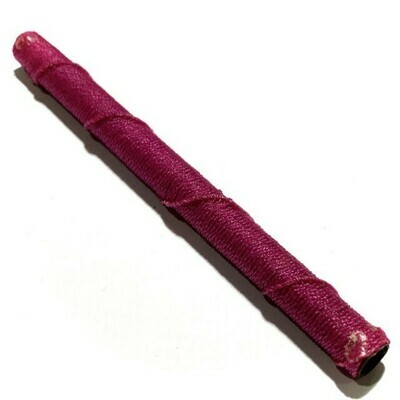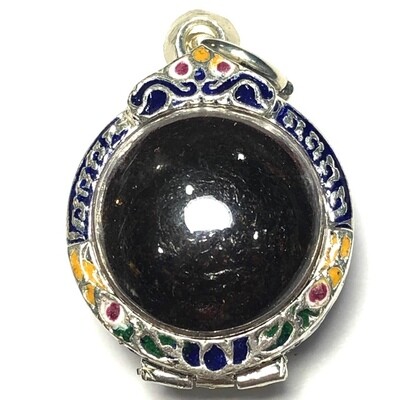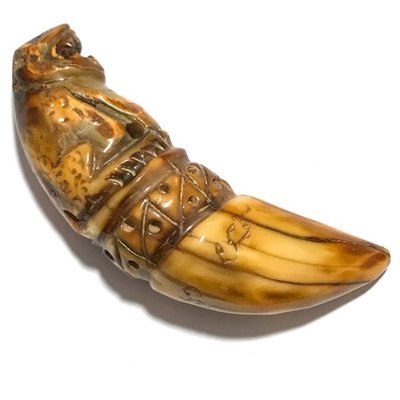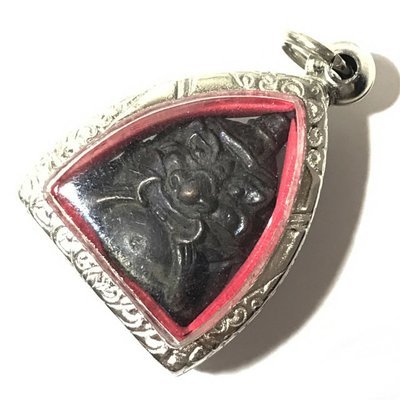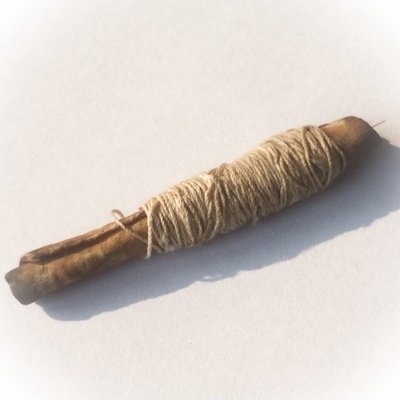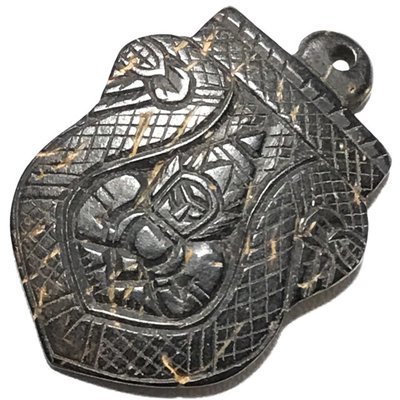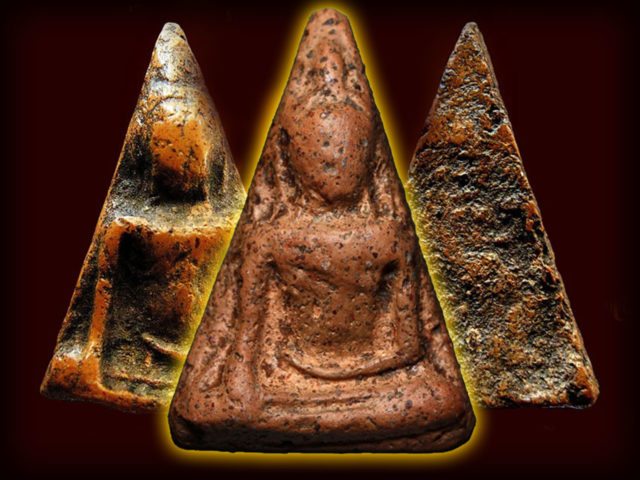
The Legend of Pra Nang Paya Amulet
Pra Nang Paya Benjapakee Amulet
Pra Nang Paya, or ‘Pra Pim Nang Paya, is an amulet from the Ayuttaya Period, which was artistically influenced in its design factors by the Artisans of the Sukhothai Periodic Style. As to the composition of the design of the Pra Nang Paya amulet, it can be said that it contains the work of the Sukhothai Artisan as its heritage, and is a Mark of Preservation of the Eight Periodic Buddhist Art styles found in Thai Sacred Arts and Amulets.
The Pra Nang Paya amulet was first discovered within the Chedi Stupa at Wat Nang Paya in Pitsanuloke, in the year 2444 BE, as King Julalongkorn Rama 5 was visiting Pitsanuloke, to be present for the casting of the Chinarat Replica Buddha at Wat Pra Sri Radtana Sasadaram. The King was invited to come and receive a large number of them as gifts (the best selected), and his Majesty then distributed them to the Government Officials and other Courtiers and Devotees. The remaining amulets, he took back to Bangkok. Apart from the ‘Serm Duang’ Horoscope Improving effects of this Purely Buddhist Amulet, the amulet is Famous for its Metta Mahaniyom, Klaew Klaad, Kong Grapan Chadtri, and Maha Lap powers.
The Pra Nang Paya Benjapakee amulet has 7 different Pim in total.
Pra Nang Paya Pim Khao Koeng.
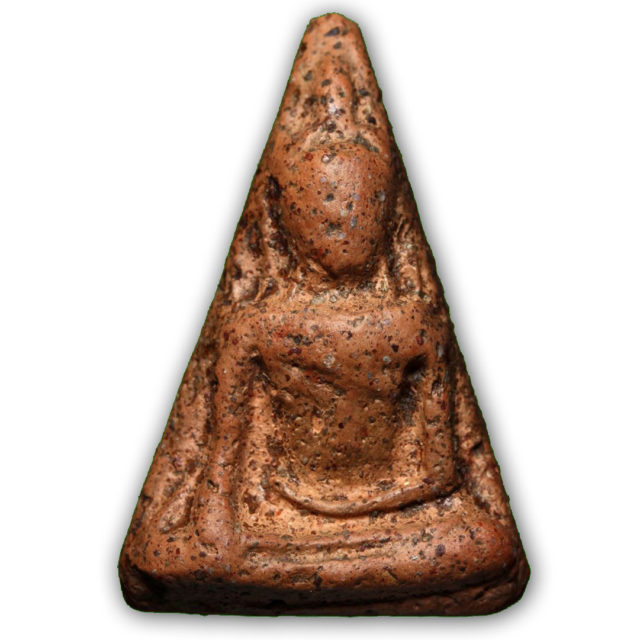
Pra Nang Paya Pitsanuloke Pim Khao Koeng Benjapakee Hiding Place Amulet
Pra Nang Paya Pim Khao Dtrong
(splits into two models; Khao Koeng Tammada, and Khao Koeng Mer Dtok Khaa).
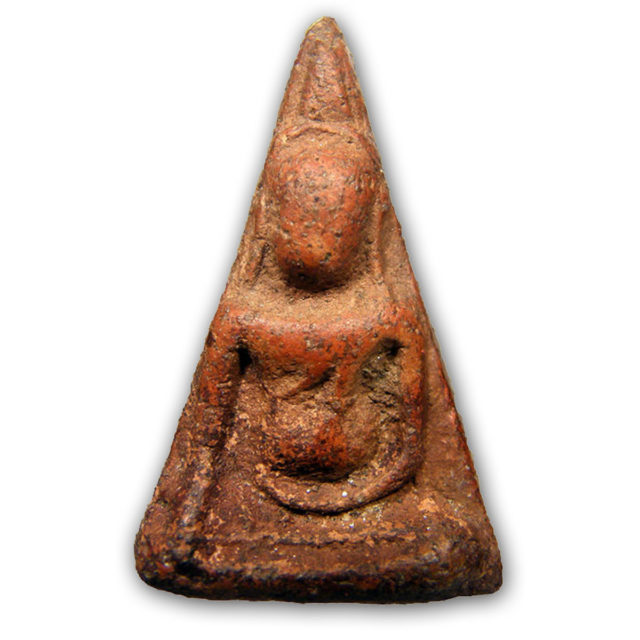
Pra Nang Paya Pitsanuloke Pim Khao Dtrong Benjapakee Amulet
Pra Nang Paya Pim Ok Noon Yai
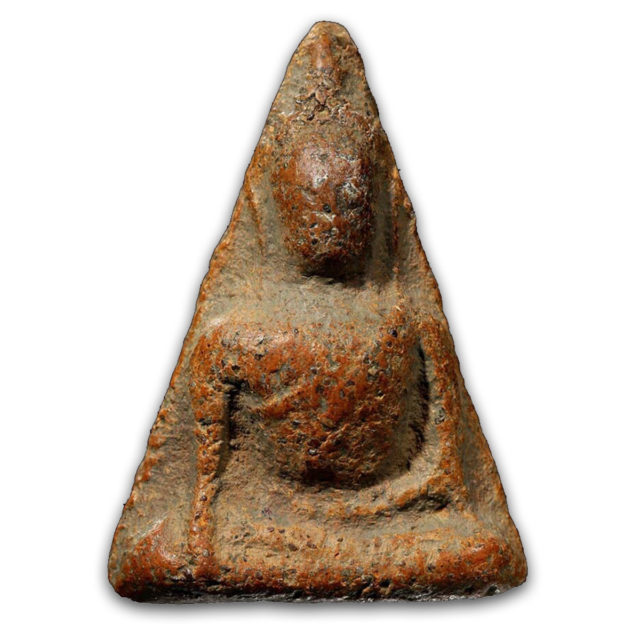
Pra Nang Paya Pim Ok Noon Yai Benjapakee Amulet – a Classic Pra Niyom Master Class Amulet
Pra Nang Paya Pim Ok Noon Lek.
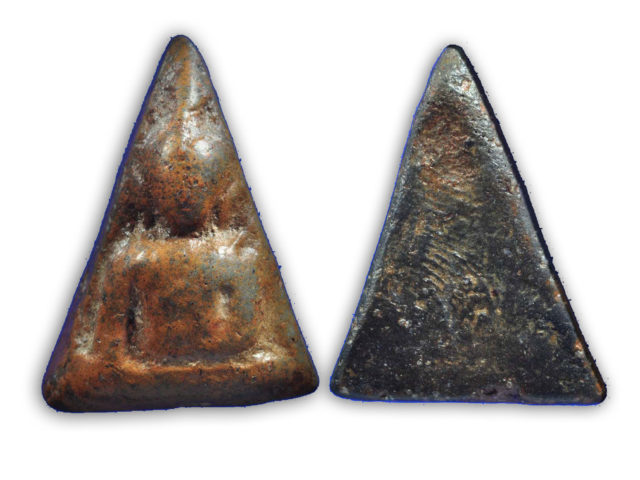
Pra Nang Paya Pitsanuloke Pim Ok Noon Lek Benjapakee Amulet of Historical Fame and Legend
Pra Nang Paya Pim Sangkati.
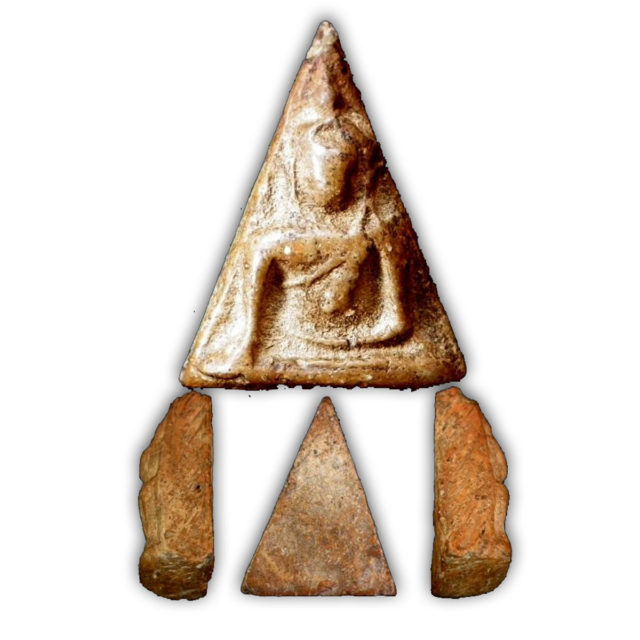
Pra Nang Paya Pitsanuloke Pim Sangkati Benjapakee Amulet – a very rare model to encounter from the seven Pim discovered in the Pitsanuloke Find
Pra Nang Paya Pim Ok Faeb also called ‘Pim Taewada’.
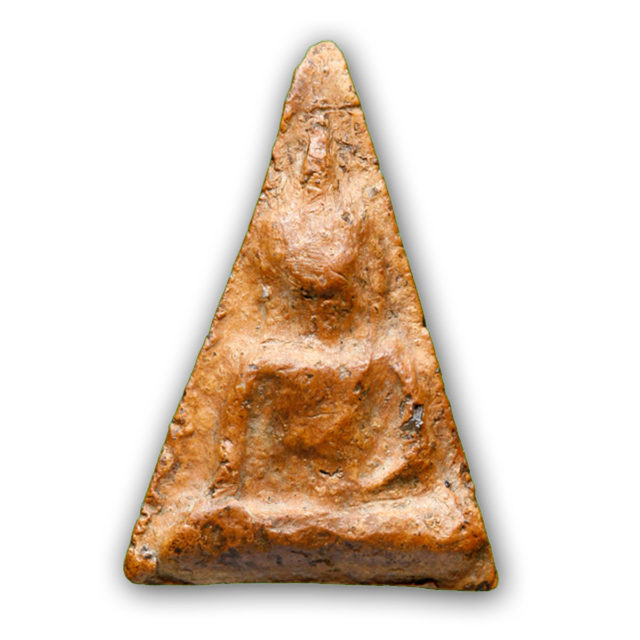
Pra Nang Paya Pim Tewada – a Classic Benjapakee Pra Niyom Master Class Amulet
Pra Nang Paya Pim Pised
(includes various amulets which do not fit in the above categories, such as the Khao Buang, or the Pim Yai Pised).
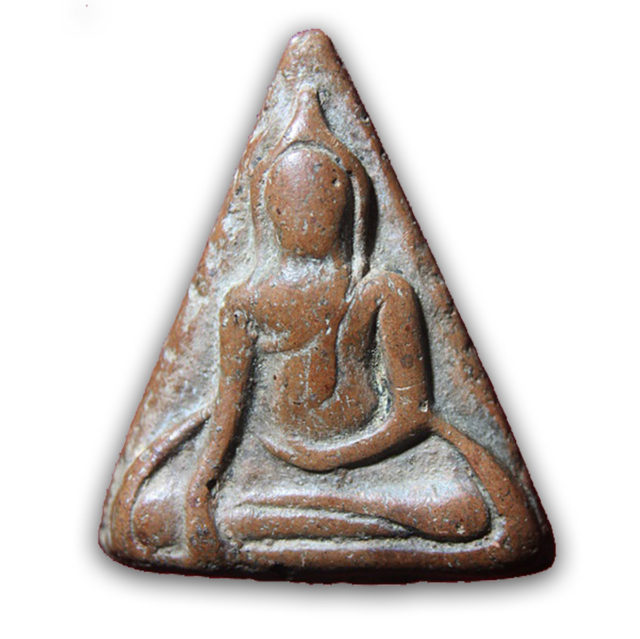
Pra Nang Paya Pim Pised Rare Special Model
Ban Neng Hanuman Awk Rob Hand Carved Skullbone Ajarn Heng Praiwan
One of the rare, varied individual hand made ancient amulets of the Great Ayuttaya Lay Master Ajarn Heng Praiwan, the Ban Neng Hanuman Wai Kroo Rob, Vanora Deity in the Thai Ramakien (Ramayana) and general of the Simian soldiers of Prince Rama, the Vishnu Avatar Deity of Ramayana, in the form of the Yant Hanuman Awk Rob (Hanuman going to battle). with his sword raised above him behind his head poised to lunge.
This skull bone carving, is in quadratic shape, and is an immensely filigrain, and finely detailed master class carving from a top artisan, with an ancient and exquisitely filigrain carved details of the images of Hanuman the Albino Vanora Monkey God, and decorative Lai Thai embellishments. This carving is so visibly, finely carved, that it can only have been made by a Master Artisan, with the highest level of prowess.
Free EMS / DHL / FedEx Express Shipping and the option of free solid silver Waterproof Casing is included with this item. An extremely rare, and exquisitely beautiful carving that is among the finest one could encounter by Olden days Lay Master Ajarn Heng Praiwan. Carvings of this level of fine detail, adherent to the ancient rules of Lai Thai Ramakien Thai fine line art traditional design, are in themself, even when not powerfully blessed by great Monks, a piece of historical and cultural religious art that is of the museum curation level.
This particular Ban Neng in fact, is beyond any kind of true price estimation (Hence 'Priceless'), for its beauty, spiritual and cultural value, and the level of artistic prowess of the design carving, makes it a piece of fine art in itself, in a collector niche of 'The Man who has everything', that would not even blink to pay ten times what we would ask for this item. But we do not like the concept of traders offering different prices for the same item, depending on how wealthy the buyer is - we consider that fraudulent behavior, and unethical trader-attitude, same price for all with us. The price of an item such as this is not low in any case, so we see no reason why dishonest traders and those who sell to millionaires should 'bump up the price'. That is not necessary to succeed as an honest trustworthy trader. This is the philosophy of curator Ajarn Spencer Littlewood.
There are a multitude of different specialized Kata for chanting to the Hanuman Deity in Thai Buddha Magic. Each Kata can be used for your different needs or time available.The Hanuman Deity brings not only Invincibility, Charm and Victory, but also induces Lucky Fortunes for Serm Yos (Promotion of Status), and Increase in Intelligence and Fast-Wittedness. Hanuman is the symbol of Loyalty, for his unwavering dedication and selfless service to Prince Rama as told in the Ramayana. He is charming, super strong, invincible, cannot die, wily and clever, and is the commander of all the Vanora Devas as their General.
Hanuman can not only protect from dangers, black magic and ill fate, he can also bring winners luck to gambling tables, is an able seducer of maidens and nymphs, and is more or less a winner in every walk of life. His strength is immense and second to no God, for which reason he is the mascot and revered Deithy of Muay Thai Warriors, who call upon the power of Hanuman to defeat their contestants and opponents in battle in the ring. The Winning Power of Hanuman, will clear the way of difficulties, whilst making all ventures successful.
Kata Hanuman
Na Ma Pa Ta Hanumaana Waa To No A Ma Ma Wa
Kata Hua Jai Hanuman (heart Mantra)
Ha Nu Maa Na (3 times)
Ajarn Heng Praiwan was a great Lay Master and Adept Necromancer of olden days, of the Ayuttaya Province. Ajarn Heng was born in the year 2428 BE, and was ordained as a Buddhist Monk when he came of age, at Wat Suwan in Ayuttaya. During his ordained years, je studied many ancient magical wicha of the grimoires of Wat Pradoo Rong Tam, which was a great library of ancient magical grimoires, perhaps the largest in the country. He became extremely able in the inscription of Khom Agkhara Sanskrit Spells, Kata Incantations, and Sacred Yant, and became very well known as a great Master of Sak Yant Thai Temple Tattoos.
Ajarn Heng Praiwan, studied the Wicha Grimoire of the Dtamra Radtana Mala until attaining full Adept Mastery, after which he disrobed for a time to help his parents, after which, he ordained again once more, at Wat Prayatigaram in Ayuttaya, with the Great LP Glan Tammachodti, Abbot of Wat Prayat, as his Upachaya Ordaining Monk. He spent a long period of time learning and mastering the full Dtamra of the Wicha of Luang Por Glan, after which he disrobed again, and became a lay-sorcerer until the end of his days, when he passed away at the age of 75, in the year 2502 BE.
It is said that Ajarn Heng's father, was either a police officer, or a prison officer, and sent Ajarn Heng to Penang, and Singapoer to be educated.But Ajarn Heng did not finish his schooling, and left, because of his immense fascination and interest in the study of Saiyasart, & the Dtamra Saiyawaet Grimoires, of Thai Buddhist, Animist, and Necromantic Occult Practices. He even traveled to the South of Thailand to learn the most ancient Magical Practices of the Southern Khao or Sorcery Lineages.
After his time practicing and mastering the Southern Lineage Magical Practices, Ajarn Heng returned to his home Province of Ayuttaya, in Central Thailand. Ajarn Heng was now a Master of the Wicha of Luang Por Glan, and the Southern Wicha of Sorcery which dates back to the Sri Vichai Era of Siam. The Wicha Mastered in Entirety of Wat Pradoo, whgich Ajarn heng has undertook, came from the time when King Naresuan Maharach, ordered the Wicha Saiyasart Grimoire texts to be inscribed and stored at Wat Pradoo Roeng Tam.
The inscriptions were begin and finished between the years 2133 - 2148 BE. It was King Pra Mahesuan Maharach, who united the city Kingdoms of Siam and Unified the country into one Land, namely 'Siam', or 'Thailand', and made the city of Ayuttaya the first capital of the Kingdom (Later to be moved to Bangkok, for logistical and geo-political reasons).
Ajarn Heng began to serve the public and accept devotees, at first by only performing Sak Yant Tattoos, and became known as one of the Top Sak yant Masters in the Country of his Time. Another later Kroo Ba Ajarn and Friend in Dhamma, Luang Phu Si, of Wat Sakae in Ayuttaya (Temple of LP Doo), once told that during the time of King Rama the 3rd, during a time of military dispute, around the year 2475 BE, many regiments of Thai soldiers, of both high and lower standing went to Ajarn Heng for his protective Yant, due to the miraculous powers attributed to them, all one the same day. On this occasion, Ajarn Heng constructed the ritual place at Wat Hantra Temple. Ajarn Heng invited a host of powerful Monks with Psychic Powers to assist in the ceremony of Blessings.
In this occasion (around 2476 BE),Ajarn Heng had to work very hard to gather a large number of Master Monks to come and perform the Suad Nam Puttamont Chanting Ritual, and this was a very had task in those days in Ayuttaya, to travel around and fine enough top masters who knew the chanting of the Nam Pra Puttamont and the Putta Pisek (Buddha Abhiseka) ceremonie. He was assisted in this task, by the great Luang Phu See of Wat Sakae.
But on this occasion, Luang Phu Si could not attend as well, because he was busy with Dhamma Duties at Wat Liab. But, after this Ceremony, Ajarn Heng would always invite Luang Phu Si to attend all of his subsequent Blessing Ceremonies, and assist with empowerment.
Ajarn Heng was a relatively wealth person with two houses and land stakes, one in the countryside in Tung Hantra, and one in Bangkok. And so, he would have devotees seek him out in Bangkok and in Hantra, for Sak Yant Tattoos, and his powerful amulets. It became popular to get high class artisans to carve his amulets, as well as village people would carve animist charms from ivory, wood, and sometimes, necromantic Ban Neng skullbones, which are of course, along with his famous metallic, and inimitably designed Takrut Maha Jakkapat Metallic Scroll Spells, the most highly valued, rare, and sought after by devotees of the great anbcient Ayuttaya Lay Sorcerer. Finally, Ajarn Heng moved to stay in Suan Malee, until the Wars in Asia Broke Out, whereupon he left the Capital, and returned to his home Province of Ayuttaya.
During this time, there were many Gangsters and Highwaymen, and a lot of need for Sak Yant Tattoos for Kong Grapan Chadtri and Klaew Klaad protective Magic, and Ajarn Heng became a highly acclaimed master, renowned for his Yant Gao Yord (A Wicha Obtained from the Great LP Hrun). Ajarn Heng was able to receive additional Wicha from the famous temple of study of Sorcery, Wat Sam Jeen, as well as receiving Wicha from the great Luang Phu Tong, of Wat Rat Ayotaya, and Luang Phu Kam Wibun.
Ajarn Heng's Kong Grapan magic was so famous, that it became popular for police and military to get his tattoos, but also that they did not like the fact that so many Gangsters had them too, anbd were impossible to shoot dead. There was once a time when Ajarn Heng was parked in a boat on the banks of the river at Wat Cherng Lane Temple, where the Police came, and had to forbid Ajarn Heng from tattooing more, because the area was overflowing with Gangs of Highwaymen, and his tattoos were making it impossible for the police to catch them.
Ajarn Heng was known to have been highly able himself with Buddhist Arts, and Carvings, in wood, ivory, bone, and skull Ban Neng, as well as being highly famed perhaps most of al, for his famous Takrut, and Carved Ban Neng. It is even said, that the Great Artist Kroo Hem Waechakorn said of Ajarn Heng that "If there is anyone who can draw the four faced Brahma Image better than anyone, it is Ajarn Heng Praiwan". Ajarn Heng was extrremely adept in Wicha Hanuman for Invicnibility, Kong Grapan, Victory, and Loyalty, which were very popular of course with all devotees, be they Police, Civil Servants, Ganster Mafias, Triads, or Military. Ajarn Heng made so many different forms of carved amulets and animist charms, that it is very hard to catalogue all of them, but if one is to say 'which amulets are the most well known?' One would say perhaps his famous Rian See Hnaa 4 faced Brahma coin.
